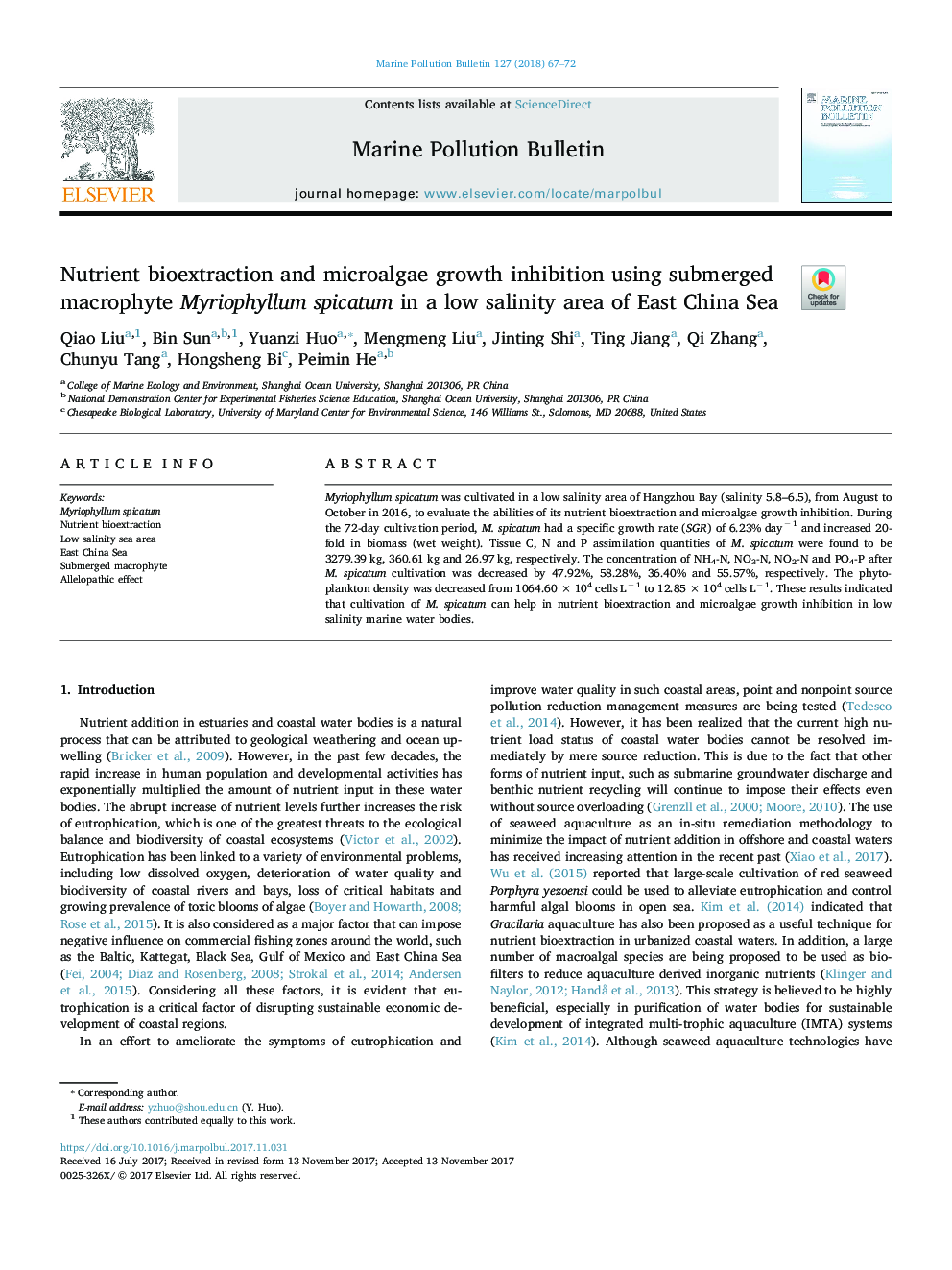| Article ID | Journal | Published Year | Pages | File Type |
|---|---|---|---|---|
| 8871600 | Marine Pollution Bulletin | 2018 | 6 Pages |
Abstract
Myriophyllum spicatum was cultivated in a low salinity area of Hangzhou Bay (salinity 5.8-6.5), from August to October in 2016, to evaluate the abilities of its nutrient bioextraction and microalgae growth inhibition. During the 72-day cultivation period, M. spicatum had a specific growth rate (SGR) of 6.23% dayâ 1 and increased 20-fold in biomass (wet weight). Tissue C, N and P assimilation quantities of M. spicatum were found to be 3279.39 kg, 360.61 kg and 26.97 kg, respectively. The concentration of NH4-N, NO3-N, NO2-N and PO4-P after M. spicatum cultivation was decreased by 47.92%, 58.28%, 36.40% and 55.57%, respectively. The phytoplankton density was decreased from 1064.60 Ã 104 cells Lâ 1 to 12.85 Ã 104 cells Lâ 1. These results indicated that cultivation of M. spicatum can help in nutrient bioextraction and microalgae growth inhibition in low salinity marine water bodies.
Keywords
Related Topics
Physical Sciences and Engineering
Earth and Planetary Sciences
Oceanography
Authors
Qiao Liu, Bin Sun, Yuanzi Huo, Mengmeng Liu, Jinting Shi, Ting Jiang, Qi Zhang, Chunyu Tang, Hongsheng Bi, Peimin He,
